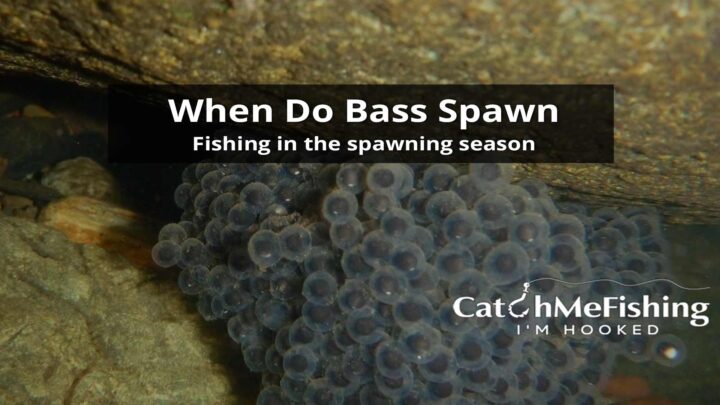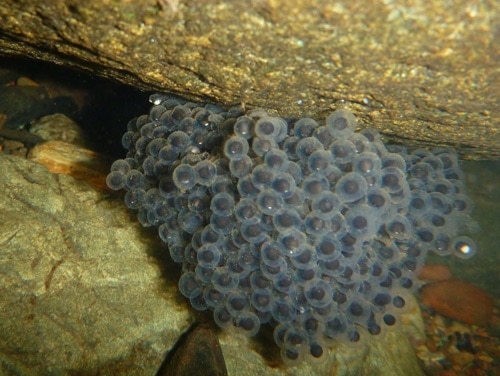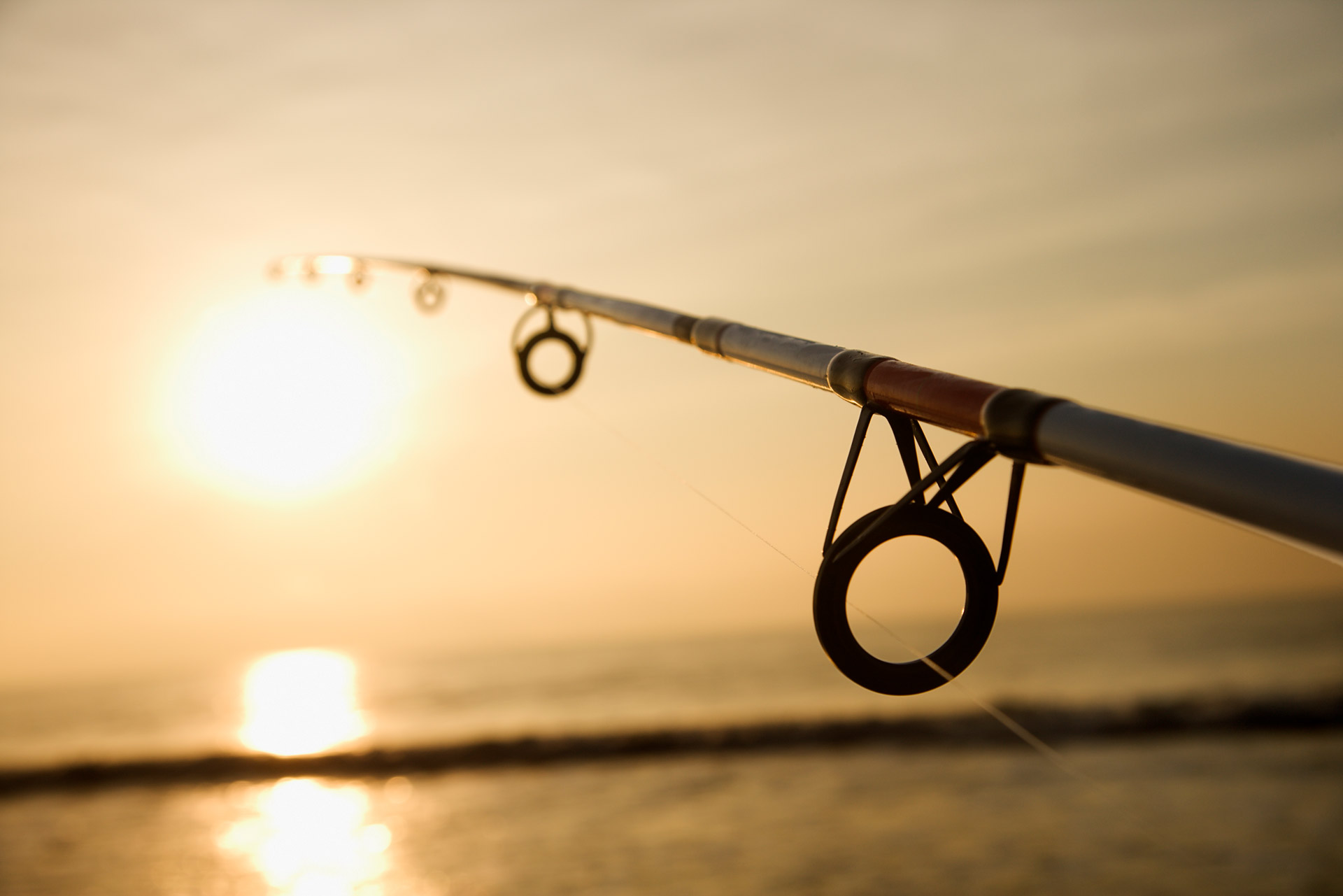How to Fish Spawning Season: When Do Bass Spawn

Bass fishing is one of the most popular types of fishing in North America. It's a favorite pastime for many anglers because bass are plentiful and great fighters. But when do bass spawn?
Largemouth Bass spawn in the spring when the water temperature reaches 60 degrees Fahrenheit (15.6 degrees Celsius). During spawning season, male bass become more aggressive and territorial. They will guard their territory against other males. This territorial behavior causes male bass to attack and bite when they see something resembling another fish.
This post will teach you everything you need to know about the spawning season and how it affects how you should fish.
What is the Bass Spawn?
The bass spawn is when the female bass lay eggs in a safe place, the male fertilizes them and guards them while they hatch. All of this normally only takes 3 weeks!
Normally it is about 3 weeks later when the young bass (called fry) begin to emerge.
When do Bass Spawn?
Bass will spawn around springtime when the water temperature reaches between 55 and 65 degrees Fahrenheit. Scientists believe bass have the ability to sense when the water temperature is just right.
When it reaches this magic number, male bass become more aggressive and are willing to attack other fish without hesitation.
The time the bass can change depending on the location. Certain areas have them spawn earlier than other places.
For instance, Texas spawning season will be much earlier than more northerly states. But, of course, it also depends on the weather patterns in that area.
Cold fronts can delay spawning activities just as much as warm rain can speed up the process.
Pre Spawn
After the cooler winter, months and the water temperatures begin to rise in early spring, the bass become more active and move from deep water into shallower areas.
The bass lose their lethargic behavior due to the rise in water temperatures and naturally turn into pre-spawn mode.
When it is time for them to spawn, the bass begin to congregate around deep beds of aquatic vegetation called "beds." The beds protect their eggs when they hatch.
Bass Nest building

Male bass builds the nests for the females to lay their eggs. Searching in the shallows for a perfect spot.
When a male finds a good location, he will dig a depression into the sand or gravel. When the nest is complete, the male will find a suitable female bass ready to spawn.
The nest is normally in a well-hidden spot like underneath a rock or the thick of weeds. Somewhere that will be away from the prey.
Mostly some aquatic underwater vegetation is a favorite spot for bass to spawn. The beds protect their eggs when they hatch.
Once a female mate is found, he will begin "courting" her, attempting to get her interested in him. This courting behavior can include chasing and nipping at his potential mate when she tries to swim away.
He will also rub his body against her. He'll do pretty much anything it takes to get a female interested.
Bass Spawning
Once a female largemouth bass is interested in the male. She will arrive at the nest and deposit her eggs.
A bass can lay between 2 thousand to 8 thousand eggs for each pound of the bass's body weight.
The male bass will fertilize the eggs after they are deposited in the nest.
He will continue to guard them until they hatch.
This will take around two to ten days if the male succeeds in defending the nest and the water temperature is just right.
The female then leaves the nest and hunts for food. Feeding on fry and eggs from other nests. Female bass will also swim into the deeper waters.
The male will stay and protect himself and the eggs by chasing away other fish that come close to the nesting territory.
The male bass will pretty much attack anything that comes close to the eggs.
Even though the male bass is very protective of the eggs, only about 0.05 percent survive. Most of the eggs get eaten by prey.
Bass Post Spawn
Post spawn the male will guard the nest until the fry emerges and protect them for up to 2 weeks.
Bass fry will live on small plankton and insect larvae when they hatch.
When the fry becomes independent, they will move into deeper waters with other bass that have also hatched.
The male bass will watch over the fry until they disperse away from the area.
Once the spawning is complete and the fry has dispersed, the males are very hungry and will hunt for food.
Bass fishing During the Spawn Season
As the weather's temperature and rain increase, so does your chances of catching some fish. However, the weather is constantly changing in the spring, and you might have on and off days.
In Early spring, dips in temperature with cold fronts can cause the bass to head back down into the deep waters.
I pick a crankbait, chatterbait, swimbait, or spinnerbait when the bass head back into the deep waters.
When the temperature increases, the bass's spawning season will start. The perfect condition for spawning is around 55-65 degrees.
It's best to target bass in the mornings and evenings when they are spawning. This is because they are most active during these times, and the males will attack most things presented to them.
Always have larger lures on hand to target the big largemouth bass in spawning. The big lures will grab the bass's attention and give you much more success.
Using a Texas rigged creature bait or a worm is a great way for you to catch bass on the beds.
Matching the hatch is also a great way to get the female and male bass biting aggressively. It involves you using similar baits to the small fish the largemouth bass are hunting.
Final Thoughts
You need to remember that bass will do anything and everything possible to protect their nest.
They are very aggressive fish when they are protecting the eggs and fry. They will attack any lure that enters their nesting area.
This gives us a great opportunity to catch some big bass.
Always watch the weather, and when the water temperature reaches 55 to 65 degrees, target the bass in the shallow areas where they will be spawning. When the temperatures cooler use a heavier lure to target the largemouth in the deeper areas of the lake.
Look for water movements and signs that the bass could be spawning. When you find the area, target the fish with a big lure to grab their attention.
Remember to use a good rod and a good reel to compliment it. In addition, you will need good equipment that will handle the large, aggressive bass easily.
Please have a great fishing trip, and I wish you the best of success in the spawning season.



